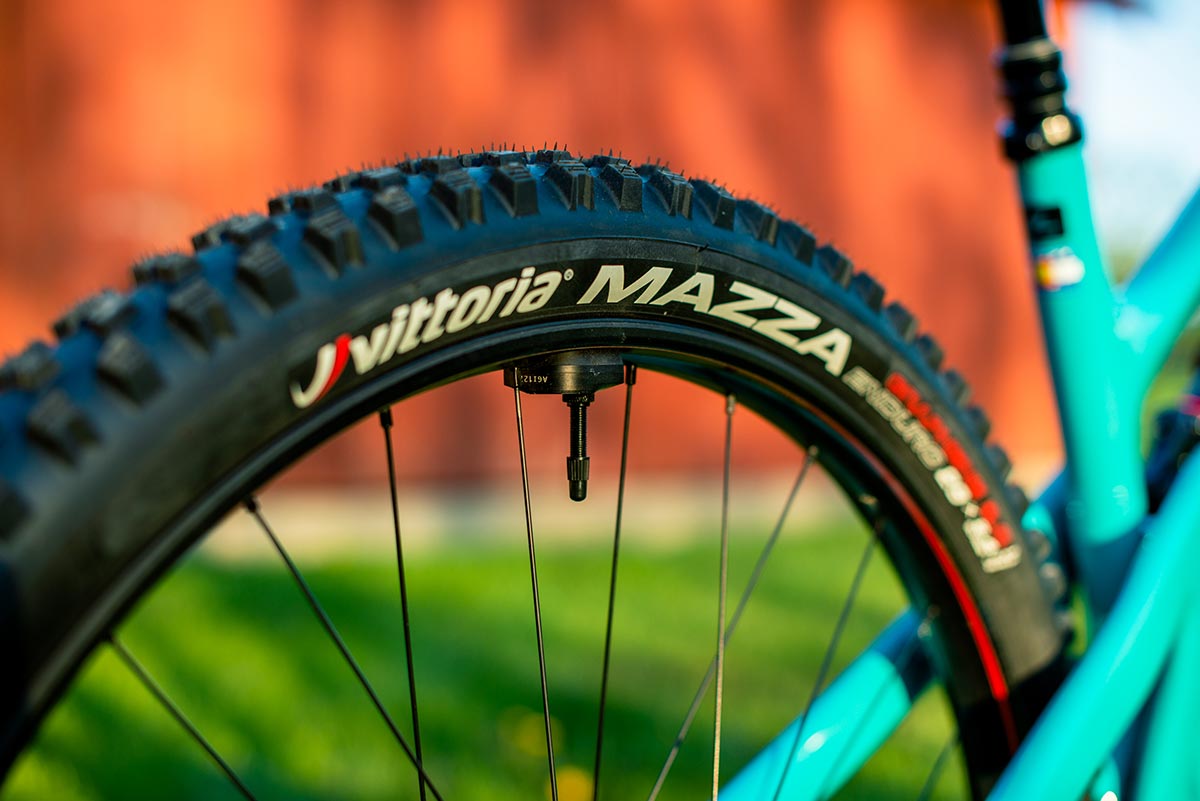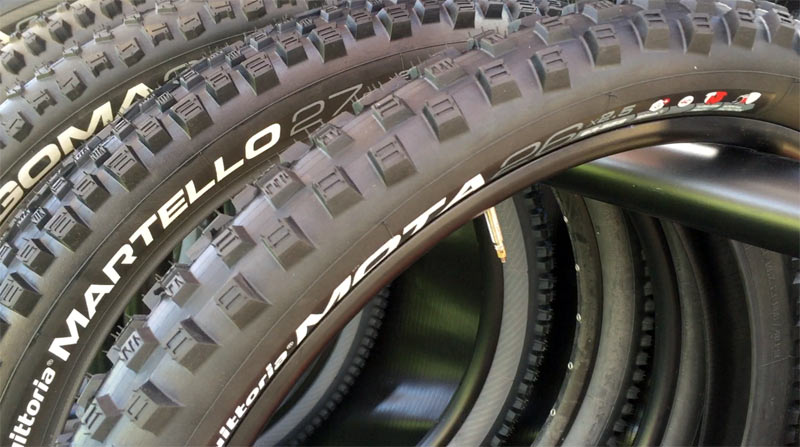Two years after development began, Vittoria’s new enduro tire has rolled into town. Word on the street is this tire could be the “minion killer”. Intrigued? We are too. The Vittoria Mazza is an “all-terrain” tire, said to go well in the dry, over both rock and loose material over hard pack, mud and loam.
These are some bold claims from the Italian brand but we love the ambition. In the absence of the real thing (samples on their way), here is everything we know so far.
Vittoria Mazza All-Terrain Enduro Tire
The new Vittoria Mazza enduro tire is available for both 27.5″ and 29″ wheel sizes, in 2.4″ and 2.6″ options. It is tubeless ready with a folding Aramid bead. As with all of Vittoria’s high-end mountain bike tires, the Mazza has a Nylon 120 TPI casing. Two options are offered; the trail casing is 1-ply while the enduro casing is 2-ply.
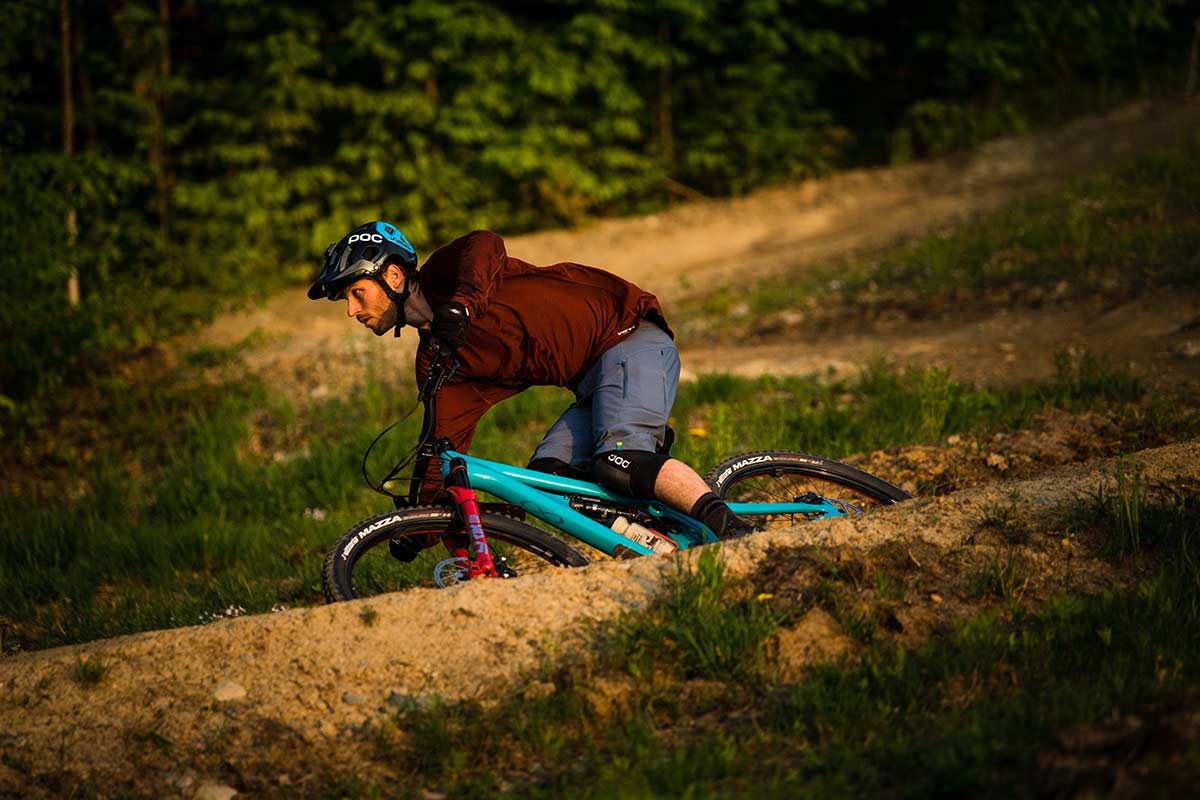
Both the trail and enduro casing tires feature an APF (anti-pinch flat) sidewall insert. This is a rigid butyl rubber layer that serves to protect your rims and offer some lateral stability. I pushed Vittoria to tell us where the Mazza performs best – up front or out back – but they held-fast, saying the tire performs well on both wheels.
In fact, none of their tires are front or rear specific. Jake Law, Vittoria’s representative for the UK said he expects riders to use it both front and rear, perhaps swapping it out for a Mota up front when conditions are particularly muddy. Conversely, he said he can also see riders wanting to run it up front due to its aggressive tread pattern, but swapping out the rear for the less-aggressive Martello or Agarro.
Vittoria 4C Technology
The Vittoria Mazza features 4C technology, which refers to the use of four compounds that make up the tread pattern. The tire has separate base and surface compounds with added Graphene 2.0 – this is what brings about the different durometers of the different compounds. For more on this check out our Tire Tech feature with Vittoria’s VP Ken Avery.
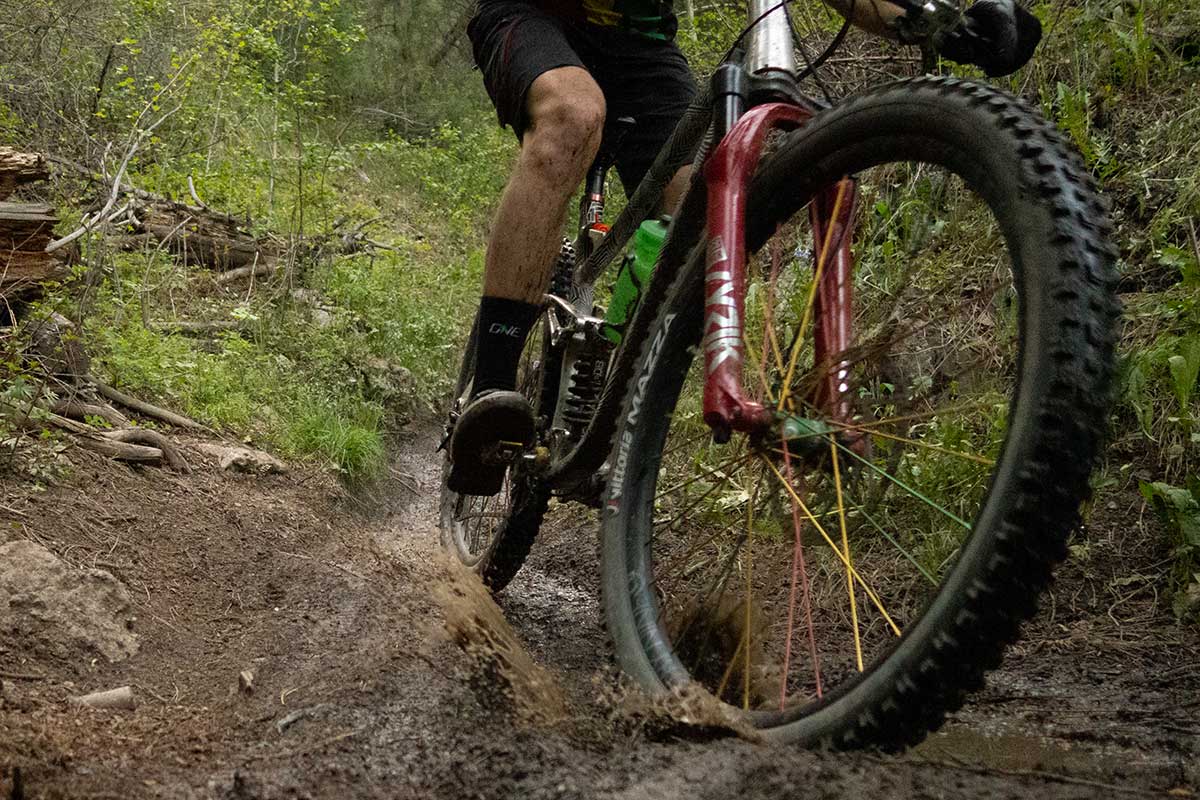
Here’s what those four compounds do on the new Vittoria Mazza:
-
Compound 1 (Lower Side Knobs) – Offers stability & resists folding when cornering. Graphene 2.0 delivers durability.
-
Compound 2 (Lower Middle Section) – Offers extended wear life. Graphene 2.0 provides puncture resistance.
-
Compound 3 (Upper Side Knobs) – Offers ultimate cornering grip. Graphene 2.0 improves wet grip.
-
Compound 4 (Upper Middle Section) – Improves climbing & braking performance. Graphene 2.0 provides enhanced traction.
Vittoria Mazza Tread Pattern
The Vittoria Mazza tread pattern is made up of a well-defined center tread with an equally well-defined outside edge. That is to say the edge blocks stand well-clear of the central tread, with plenty of space in between for the outer blocks to perform as an edge should.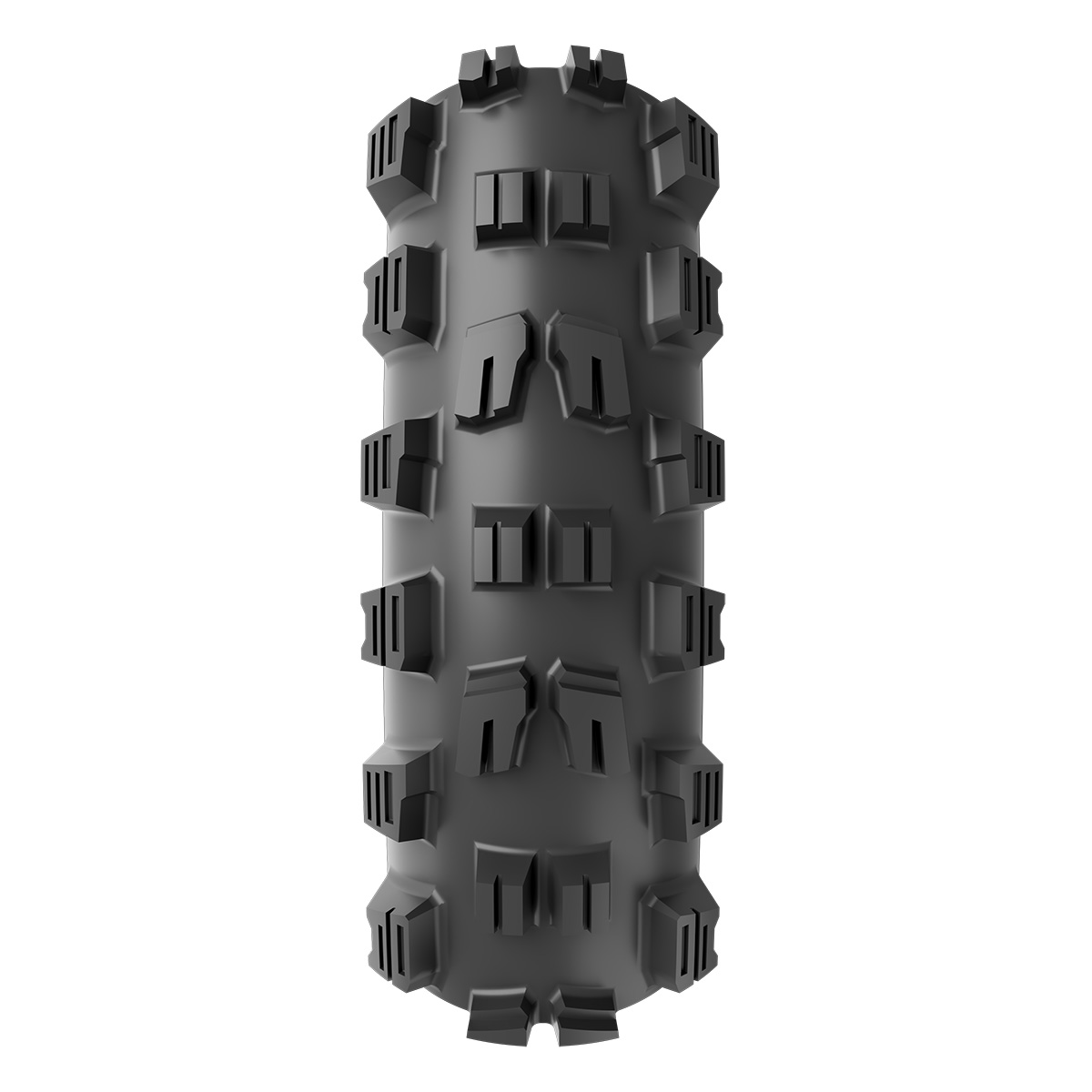 The first thing we notice is the abundant use of siping – these are the lines you see on the top of each tread block, oriented in the direction of travel. Siping has been used by Vittoria before, on their Mota, Martello and Agarro trail/enduro tires.
The first thing we notice is the abundant use of siping – these are the lines you see on the top of each tread block, oriented in the direction of travel. Siping has been used by Vittoria before, on their Mota, Martello and Agarro trail/enduro tires.
These serve to give each block a little bit of flex. That flex is tuneable based on the width of the sipe. The wider the sipe the more it flexes. More on that later…
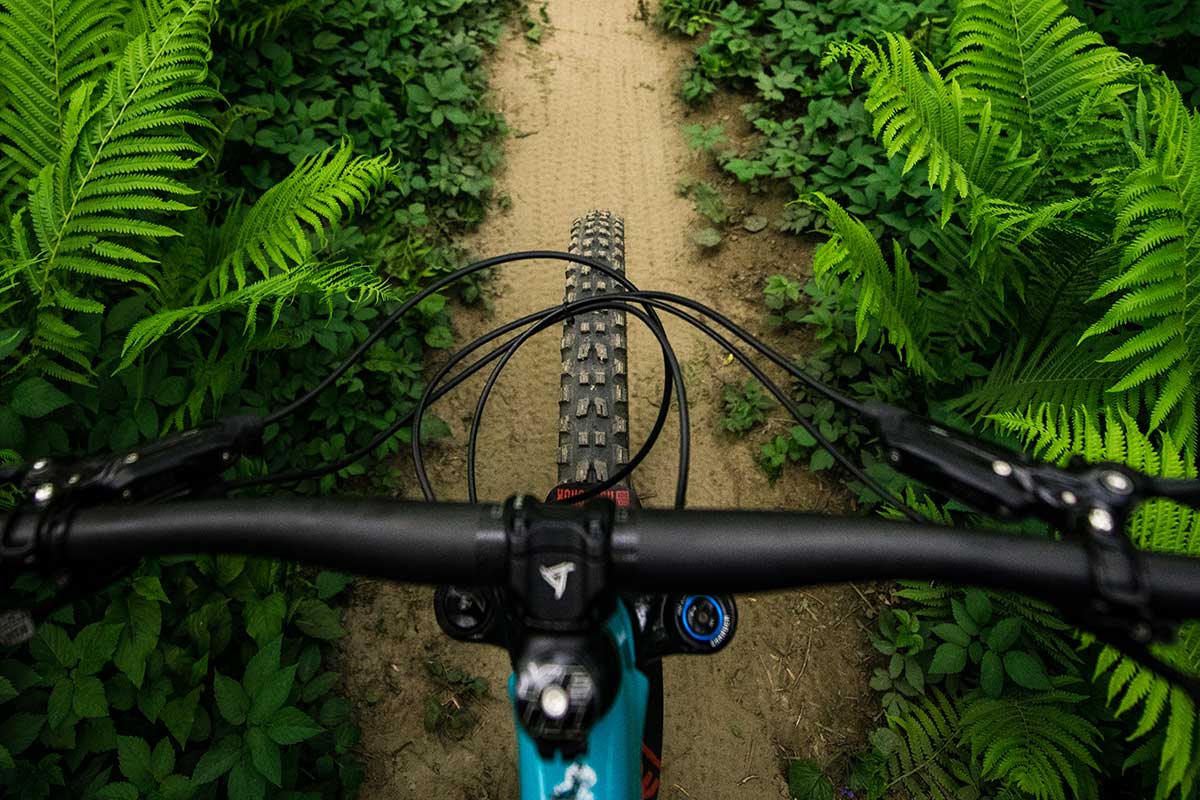
The Central Tread
These blocks alternate between the following; a pair of smaller “moto” blocks with a single thin sipe down the middle of each, oriented in the direction of travel; and a pair of much larger irregular-shaped blocks with a stepped leading edge. Yeah, that’s right. The steps are at the leading edge, not the braking edge.
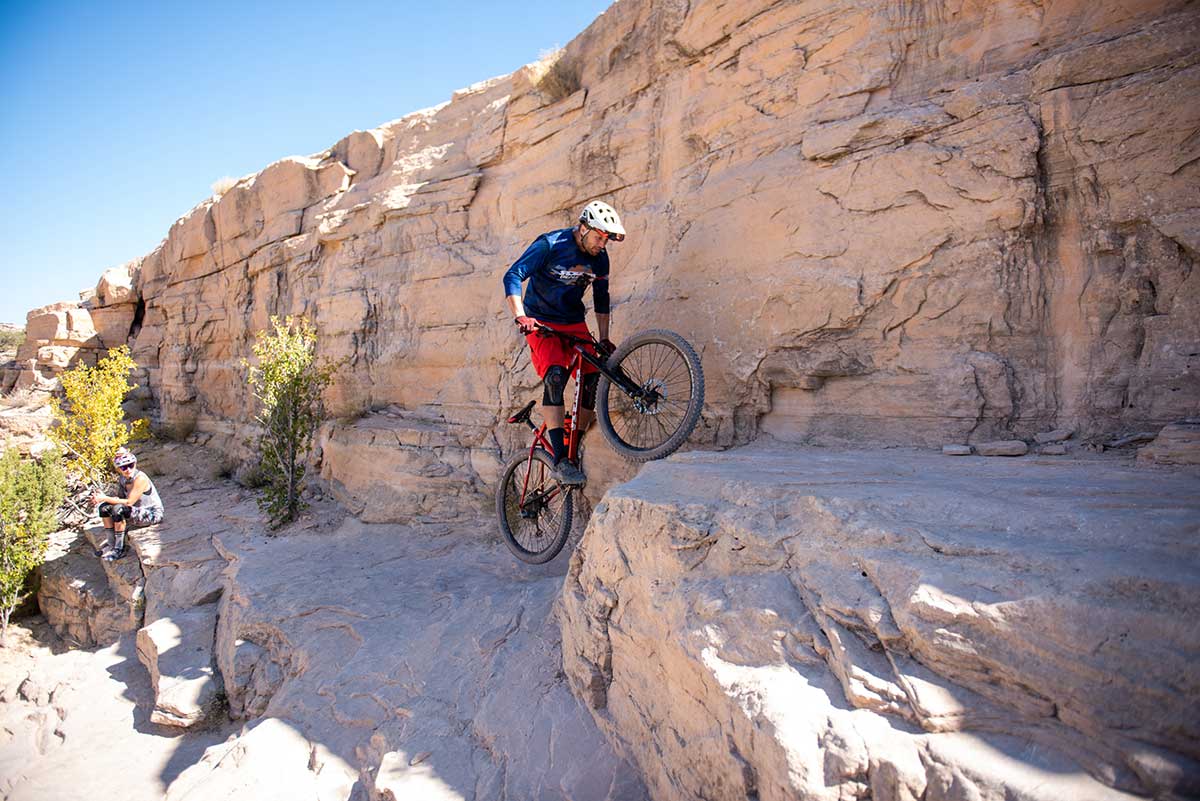
Why the steps? Climbing traction. Vittoria wanted to make a tire that performs as well up front as it does out back. That means thinking carefully about how the tire bites into terrain – the last thing you want is your rear tire spinning out as it looses traction up a gnarly climb.
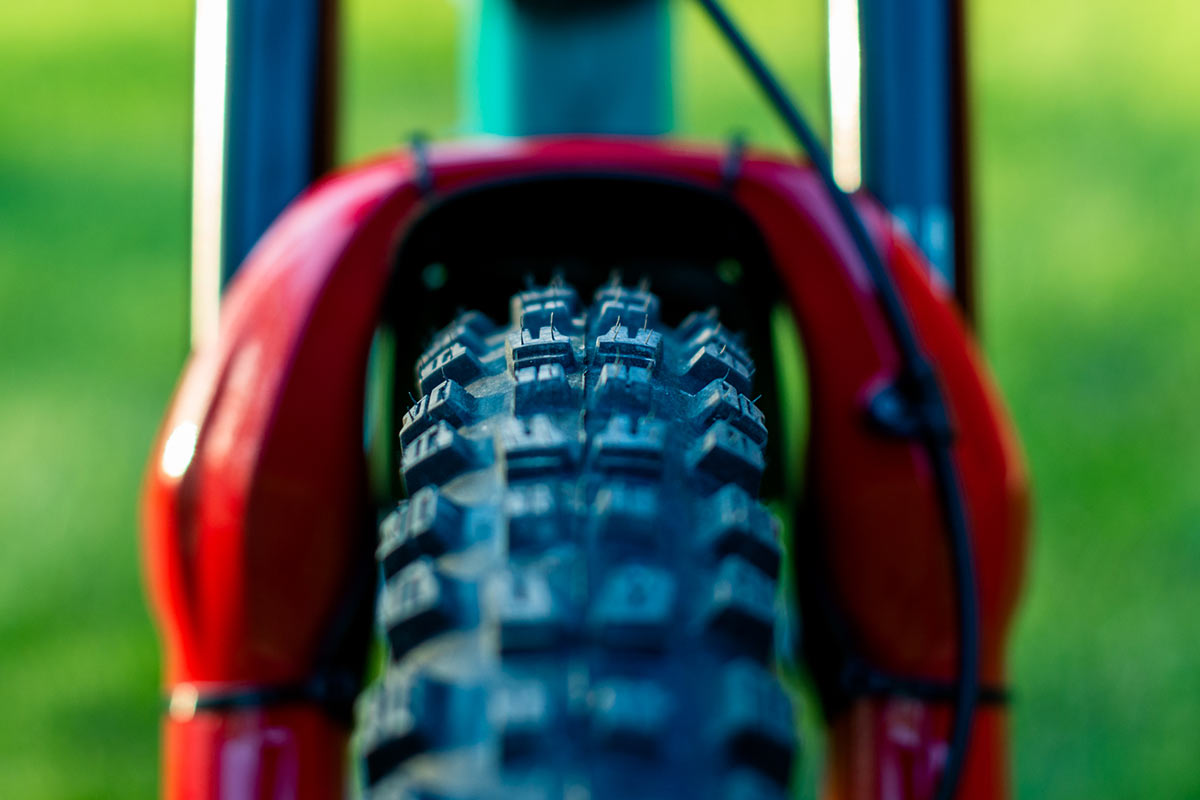
To prevent that scenario, rather than the usual “ramp” you see at the leading edge of central tread blocks, Vittoria opted for the stepped design.
Does this come at a cost to rolling resistance? Who knows, but Vittoria say the step performs just like a ramp does at speed, but offers better bite at slow speed on steep climbs.
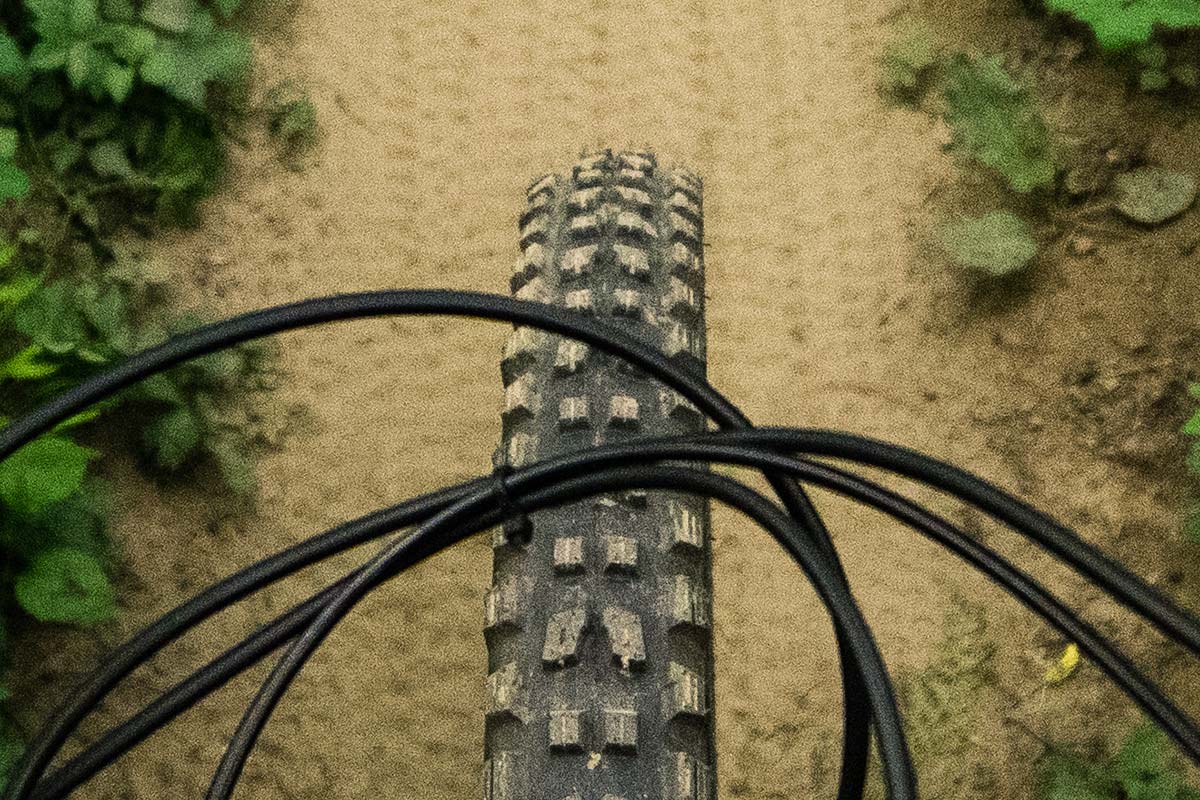
Our final observation on the central tread concerns the distance between the alternating blocks (in the direction of travel). We’re just going off pictures here, but, I consider that a fairly long way. That should give the tire ample opportunity to shed any mud collected off the trail, and offer some serious braking performance.
On the edge
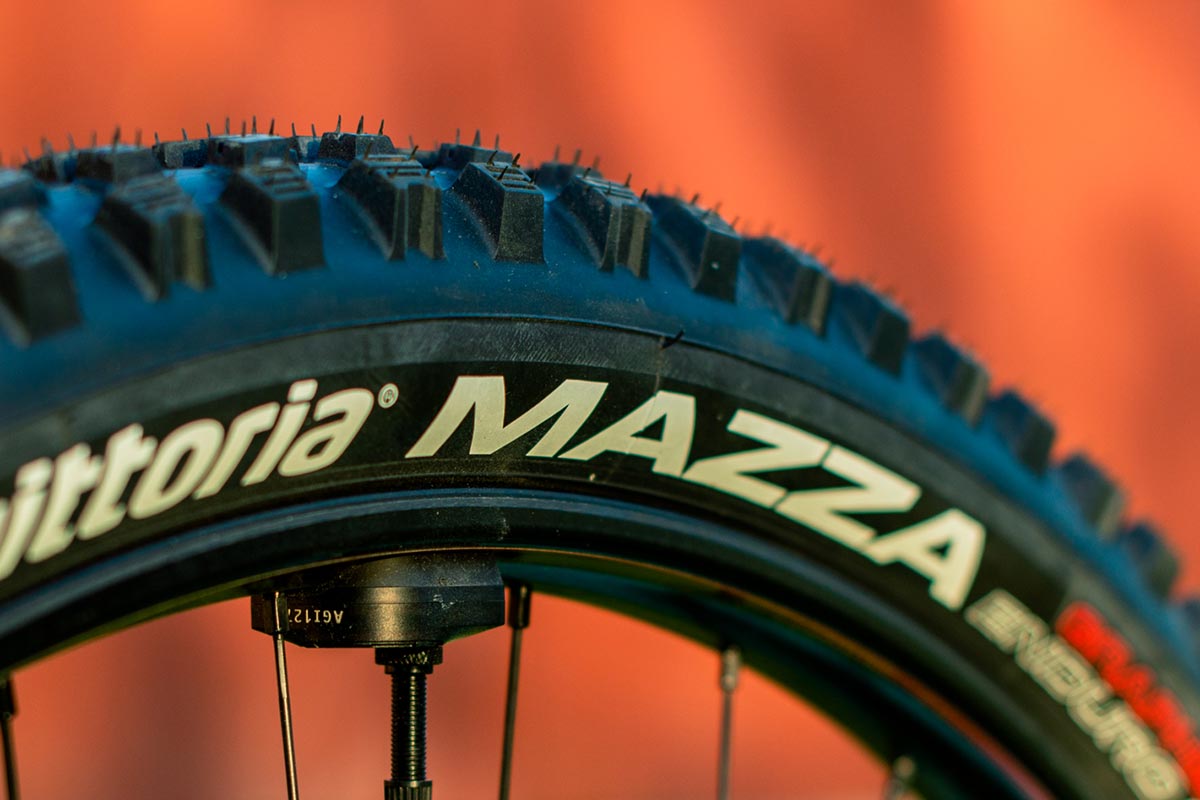
At the edge, we’re encouraged by the size and depth of the tread blocks. Both types of block are tripple-siped. Note that the larger sipe is sat on the inside edge, while the thinner sipes sit closer to the outside.
This translates to a gummy inside edge and a stiffer outside edge, engineered to offer compliance and traction without the risk of the blocks simply folding over when the rider corners hard.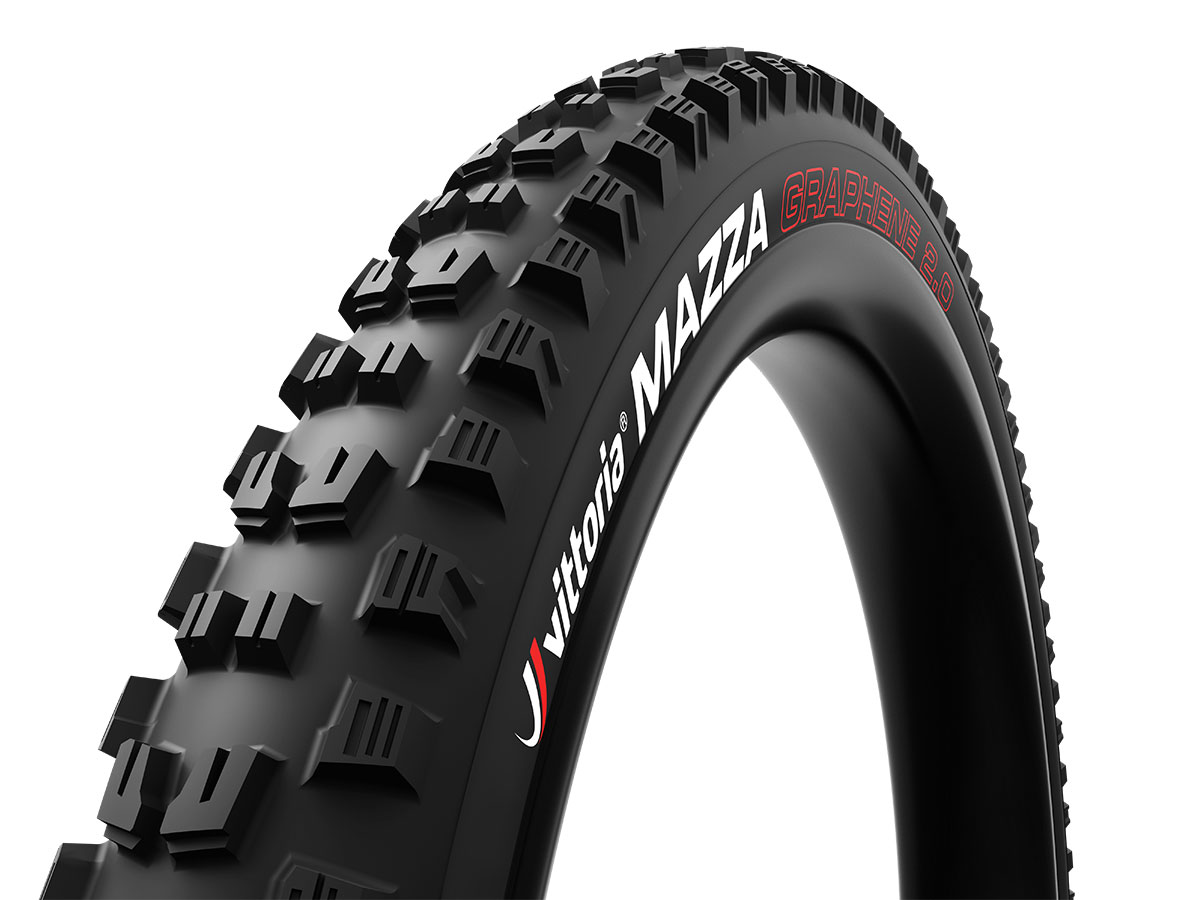
Notice that while the distance between the edge blocks and central tread is fairly generous, they are somewhat closer to one another at every other instance. The central tread blocks flare out to a degree, reducing this distance considerably. I imagine this should help riders transfer weight to that outer edge when cornering, without experiencing too many sketchy moments on the lean to full commitment.

All guesswork, of course. First ride impressions coming soon. In the meantime, check out Vittoria’s Ken Avery prodding the outside tread blocks to get an idea of that asymmetrical flex we mentioned earlier.
Pricing, Availability & Claimed Weights
The Vittoria Mazza retails at $69.99 USD / €62.95, and is available in the following sizes in both trail and enduro casings. Pick up a set up from your local dealer now.
| Vittoria Mazza Casing | Size | Claimed Weight (g) | ETRTO |
| Trail | 27.5″ x 2.4″ | 890 | 60-584 |
| Trail | 27.5″ x 2.6″ | 1030 | 65-584 |
| Trail | 29″ x 2.4″ | 950 | 60-622 |
| Trail | 29″ x 2.6″ | 1100 | 65-622 |
| Enduro | 27.5″ x 2.4″ | 1200 | 60-584 |
| Enduro | 27.5″ x 2.6″ | 1300 | 65-584 |
| Enduro | 29″ x 2.4″ | 1300 | 60-622 |
| Enduro | 29″ x 2.6″ | 1400 | 65-622 |
What on earth is the ETRTO? Find out in our Tire Tech feature here.
